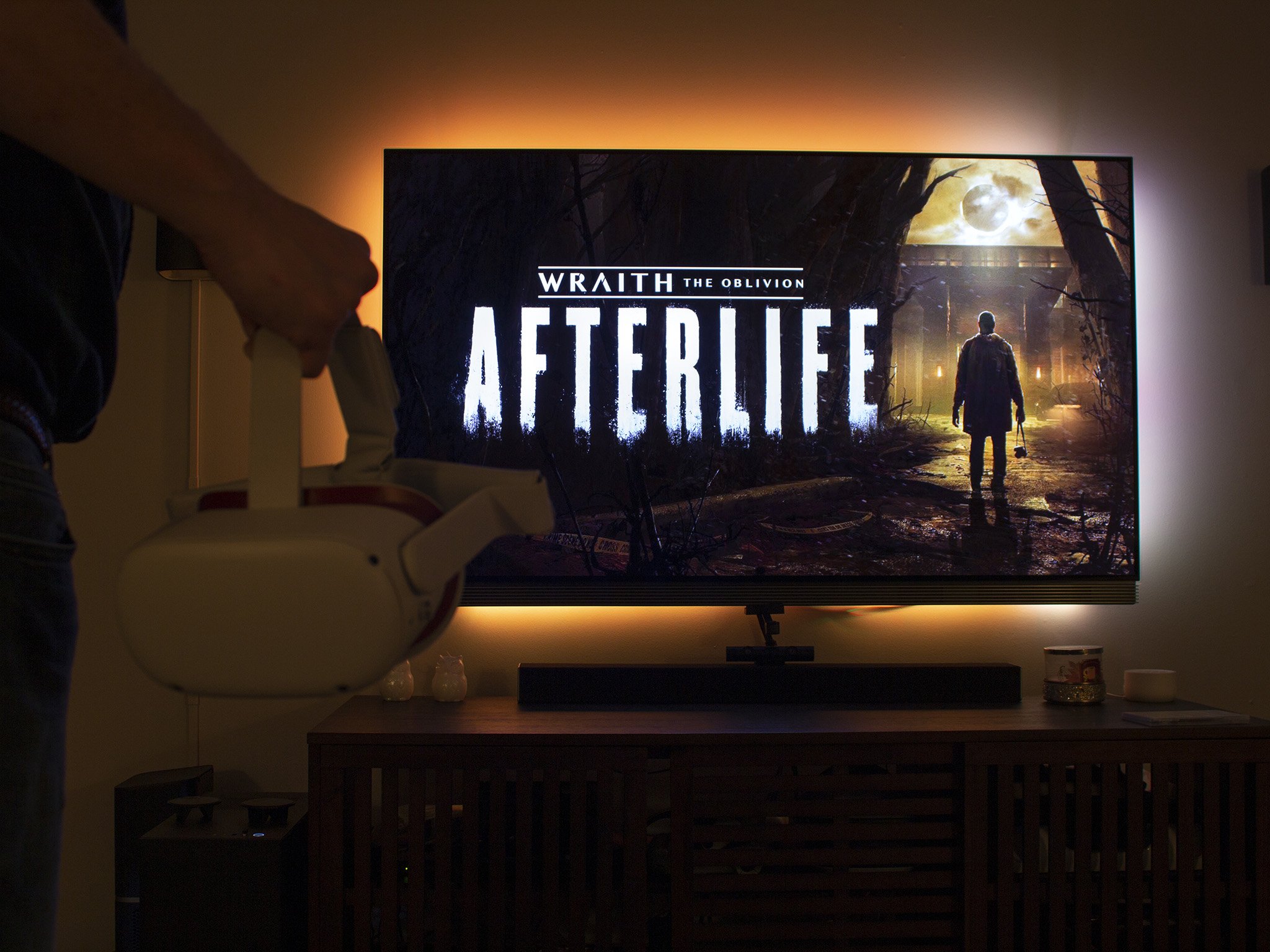Android Central Verdict
Bottom line: If you've grown tired of cheap jump scares or overly action-heavy "horror" games, you owe it to yourself to play Wraith. Set in the World of Darkness, Wraith creates a truly horrifying scenario in which you've died but are stuck in a sort of purgatory, trying to solve the mystery of your death whilst simultaneously avoiding the deadly spectres that haunt the halls of the mansion. It's an unbelievable experience that'll have you hoping the afterlife is nothing like it.
Pros
- +
Gorgeous visuals and sound design
- +
Absolutely terrifying enemies
- +
Great world design and WoD lore
- +
Captivating story and voice acting
- +
Doesn't rely on jump scares
Cons
- -
Slow movement can be frustrating
- -
Mostly linear gameplay lowers the replayability factor
Why you can trust Android Central
Imagine waking up one day only to find out you're dead. You're not exactly sure how it happened, where it happened, if someone killed you, or you just died naturally. Either way, you're trapped in a space somewhere between Earth and some other ethereal realm. It looks a lot like the last place you recall visiting, Barclay Mansion, but everyone here is... gone? Vanished? A ghost? Maybe they're just a memory. A figment of your imagination.
Regardless of what they are, you appear to be trapped here, wandering the halls in search of some answers — any clue to what's going on and why. Memories echo like footsteps in the halls, people you've met before take on a haunting new look, and everything seems to be connected to one single event that happened in the last few days of your mortal life. Will you survive long enough to capture the truth about your life, or will you be cast into Oblivion for all eternity? That is the quest in Wraith: The Oblivion - Afterlife, which immediately made its way on our list of best Oculus Quest 2 games when it launched on April 22, 2021.
For this review, I played Wraith: The Oblivion - Afterlife on an Oculus Quest 2 using the Quest 2-native version of the game. Wraith is also available on the Oculus Rift platform at launch on April 22. On May 25, it'll launch on Steam VR, while the PSVR version is launching sometime later in 2021.
Wraith: The Oblivion - Afterlife is a title that comes from VR veteran studio Fast Travel Games and fits right in with the company's quirky-yet-high-quality library. The developer that had its hand in games like Apex Construct, Budget Cuts 2, and The Curious Tales of the Stolen Pets certainly doesn't seem to like to stick to one theme or type of gameplay, and Wraith certainly doesn't feel like anything the company has made to date.
Wraith is a survival horror game at its core, and to enjoy it you're going to need to appreciate what makes a survival horror game actually good: the struggle to survive. For a while, too many survival horror games turned into action-adventure games with horror elements. Wraith: The Oblivion - Afterlife is a true survival horror game in that its environments are haunting, its enemies deadly, and your chances of survival grow slimmer with every minute you spend in the game.
Wraith: The Oblivion - Afterlife Compelling story and gameplay
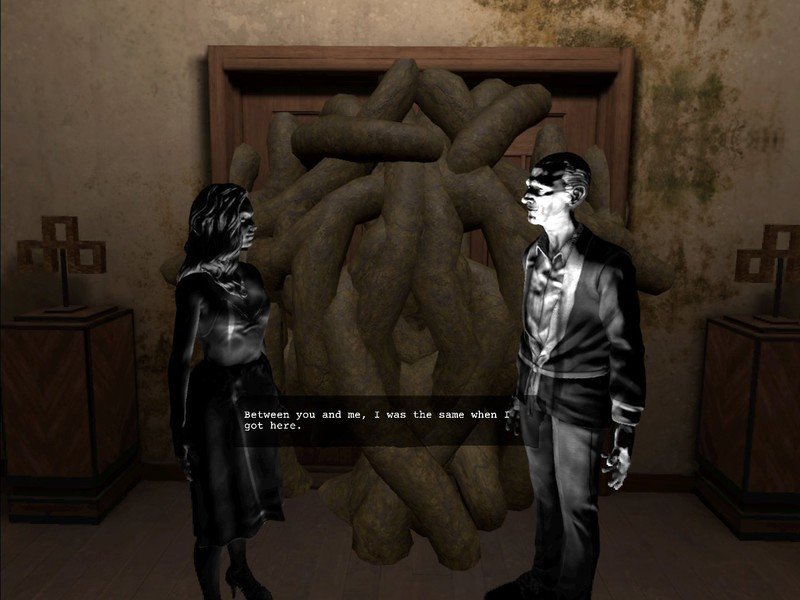
In Wraith: The Oblivion - Afterlife, you play as photographer Ed Miller, represented either by a pair of floating hands or with arms attached to them (your choice based on comfort). As is the case with many modern VR titles, Wraith's physical representation of a virtual character allows players to interact with the environment in realistic ways. Objects like rocks and books have weight to them. You'll actually have to duck — or use the duck button — to crawl under objects while navigating the environment or hiding from enemies.
Environmental interaction, as a whole, is somewhere in-between a game like The Walking Dead: Saints & Sinners — where basically everything is interactive — and a game like Jurassic World: Aftermath where almost nothing is interactive. It feels like a sensible medium between the two; just enough interaction to keep players wondering about clues in the environment, but not enough to get you too caught up in sifting around a haunted mansion for no good reason.
Like Budget Cuts 2 or Apex Construct — two games also developed by Fast Travel Games — Wraith will occasionally hide objects in cabinets or on a shelf in a closet for you to find. You, too, can hide inside of vanity closets with rolling doors; a mechanic that's similar to what I encountered in Jurassic World Aftermath but is far less safe since spectres can open doors in this game — unlike the raptors in Jurassic World Aftermath.
Environmental interaction and controls feel just right; not too simple, not too complex
The controls just feel right; not too simple, not too complex. Distant objects can be pulled closer to you by reaching for them, holding the grab button, and giving your wrist a flick to launch them toward you — not unlike Half-Life: Alyx's gravity gloves. The next objective can be found by holding your arm out and feeling which direction your arm pulses most, accentuated by glowing veins in your corporeal arm. Powers and tools are found in a simple overlay menu rather than being tied to a somewhat confusing on-body system. This particular implementation was just easier to use than an on-body inventory system, even if on-body inventory feels cooler.
Fast Travel Games has included an astounding range of comfort and accessibility options in the game to accommodate nearly every player. From options for a standing or seated experience, several locomotion options, quick turning, blinders and other comfort options, and even the ability to have your arms represented only by hands (if virtual arms freak you out).
Wraith takes place in the same universe as games like Vampire: The Masquerade and Werewolf: The Apocalypse. That's the World of Darkness universe if you're keeping track. As such, there's a bit of shared narrative going on between these titles but nothing that would be to the detriment of anyone who has not played those titles — or experienced anything else in the wider World of Darkness.
Wraith takes place in the same universe as Vampire: The Masquerade and Werewolf: The Apocalypse
Being in that universe means there's plenty of supernatural happenings. As a spirit, your goal is to figure out what caused your death so that you can escape the seemingly eternal prison of Barclay mansion. In your quest to find personal items of those around you at the time of your death — thus, unlocking their stories and last moments on Earth — you'll run across a number of spectres who are ruthless and bent on revenge.
Whether it's ex-friends done wrong by the eccentric director at the center of the story, or actresses that seem to have faced some sort of abuse during their Hollywood journey, all of these spectres seem to have been haunted by a terrible past and are bent on eliminating you. In a way, it feels a bit like playing Clue in the afterlife. Someone's always trying to kill you, seemingly so as to prevent you from finding the truth.
Fast Travel Games published this gameplay video above to give players an idea of what to expect without spoiling much. I'll certainly not be the one to spoil the half-dozen spectres you'll come across in your 8-10 hours playing Wraith, but know this; sight of a spectre is a death knell. You have no real defense against any of them and must do your best to avoid them by using environmental objects, like throwing rocks or smashing glass bottles, as well as a number of powers you collect along the way. Wraiths — the spirit creature you play as in the game — aren't powerless, but they certainly aren't powerful.
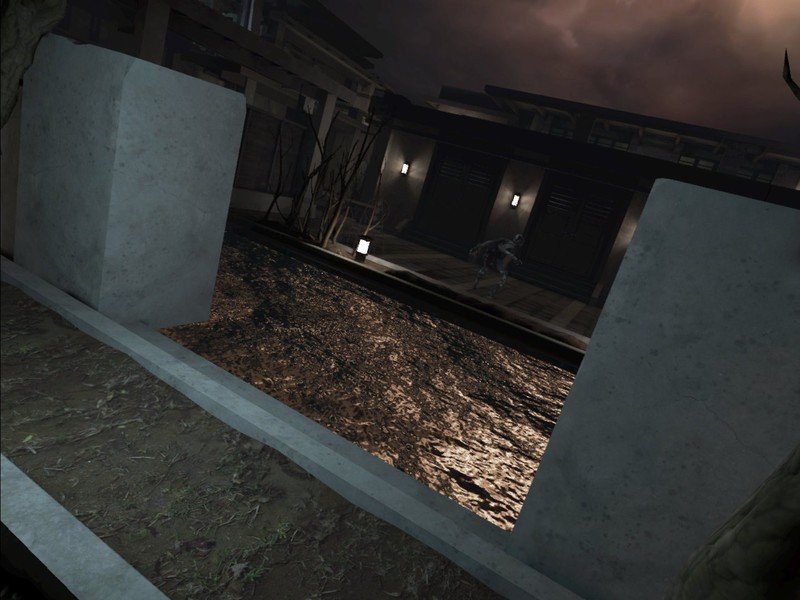
Not being able to kill specters is one of the hallmarks of the game's fear factor
In fact, not being able to kill specters is one of the hallmarks of the game's fear factor. There are no Five Nights at Freddy's kind of jumpscares here. That's something I was quite thankful for as I hate that cheap feeling in horror games. There's nothing less creative in VR than throwing some crazy-looking thing in your face while it's screaming just to make you flinch away in horror. Wraith feels like it was ripped from the golden age of horror games in the late-90s or early 2000s and I loved every minute of the atmosphere.
Exploring the mansion just makes sense. Locked doors require keys. Safes require codes. Objects blocked by strange ghastly tendrils require a tool to remove. Save spots are stationary and can be used to refill health and other energies required for powers or tool usage. The mansion can be freely explored, but the story follows a linear path of progression that is tailor-made for a specific experience. That means there's not a ton of replayability here, but this is a significantly longer game than most VR players are used to at this point.
Wraith: The Oblivion - Afterlife Otherworldy sounds and visuals
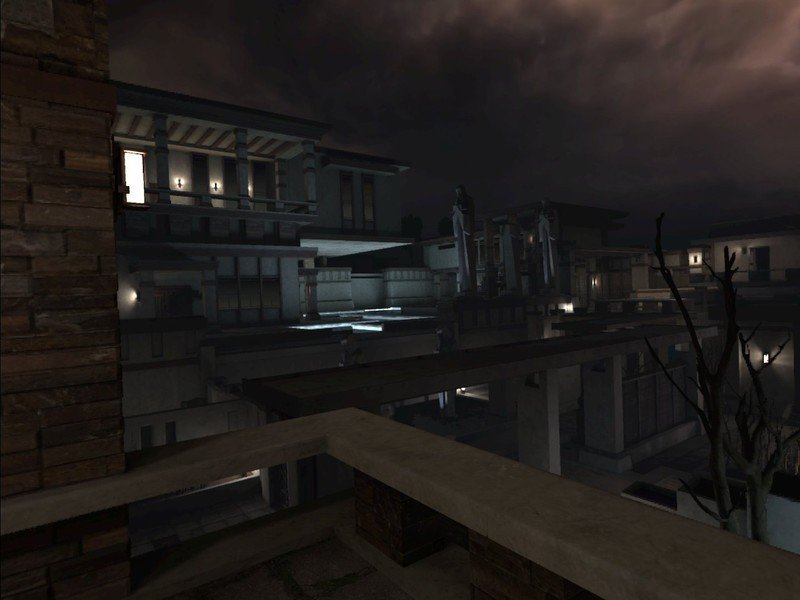
The atmosphere in Barclay Mansion is thick. No, I don't mean Superman 64 fog thick; I mean an atmosphere that is palpably terrifying at every turn, even though you'll probably spend more than a few moments admiring the details in the architecture of the mansion. Memories of conversations haunt rooms, giving you glimpses of events as they unfolded before your untimely demise. These are told in a fascinating and unique way, as characters are almost statuesque in their look and posture. Slow movements and freakishly fast entrances and exits immediately gatch your gaze, keeping you focused on the conversation throughout its entirety.
Voice acting in the game is utterly superb. None of it felt forced or amateur in the way many VR games tend to feel. A lot of that comes from the size of most VR studios. Fast Travel Games isn't a huge studio — just 26 individuals in total — but it's larger than many indie studios working on VR content and it shows.
Voice acting in the game is utterly superb.
It's not just the voice acting that's excellent, though. It's the sound design, as a whole. Characters' voices are immediately recognizable, especially one spirit with a particularly evil voice that feels like it echoes through your skull as it speaks. Sounds are properly placed in the environment and sound like they're coming from the exact spot whence they originated. Music is used carefully and not overdone. All in all, it was an impressive mix that showed why this developer holds the prestigious title it does.
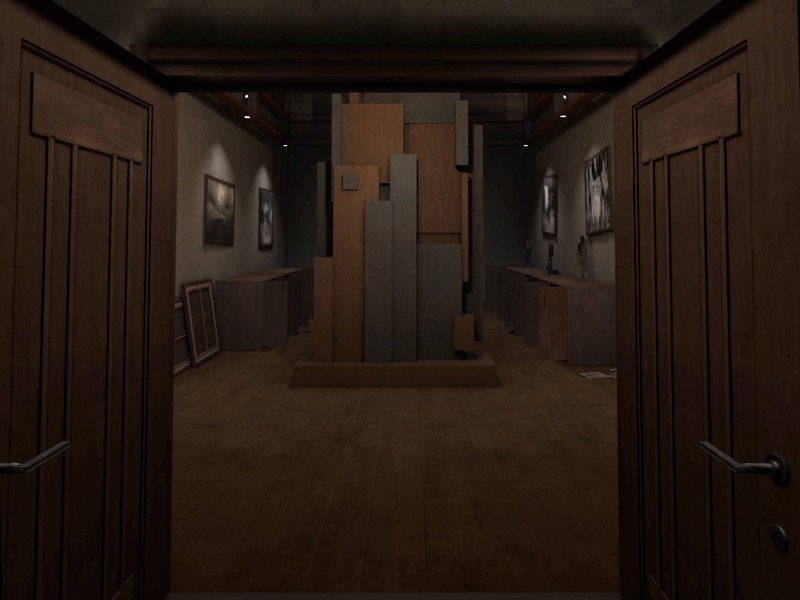
Visually, I was impressed with what I saw. Despite being proven wrong several times over, I'm always skeptical about what developers might be able to pull off on the Quest platform — especially when a game is also available on the PC. What I saw was horrifying in all the right ways and, as I said in the previous section, felt very much like an homage to classic horror games.
The world felt very purposefully and beautifully designed rather than as a result of a technical limitation
The mansion itself feels like a cold, dead place, yet its intrigue beckons you to check each and every room, even if you know there's something otherworldly that might kill you there. Really, the graphics are simply stunning to behold; you can see that from the screenshots here. The mansion is huge and, despite its size and complexity, is adorned with little details all over the place. It never felt like what I was seeing was the result of a technical limitation or even a cartoony art-style aesthetic — it just looked excellent.
The Quest 2 version sported lots of color banding on textures, some noticeable LODing — that's when you see an object obviously improve in quality as you draw closer — and rooms that were overly dark upon first entrance, only to be revealed by a receding dark fog. Most of these effects furthered the feeling that Wraith pulls some of its atmosphere from classics like Silent Hill, which has a very unique and distinguishing art style.
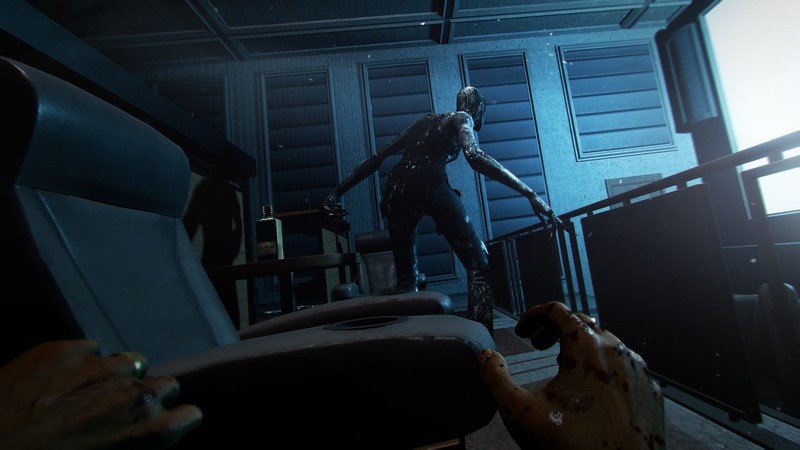
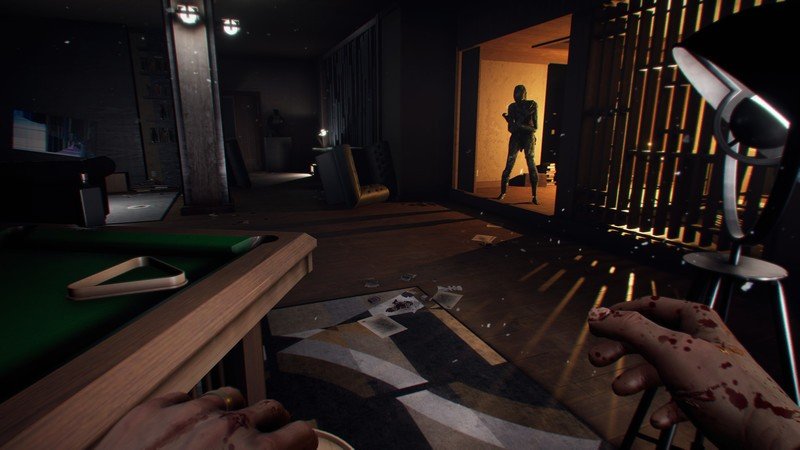
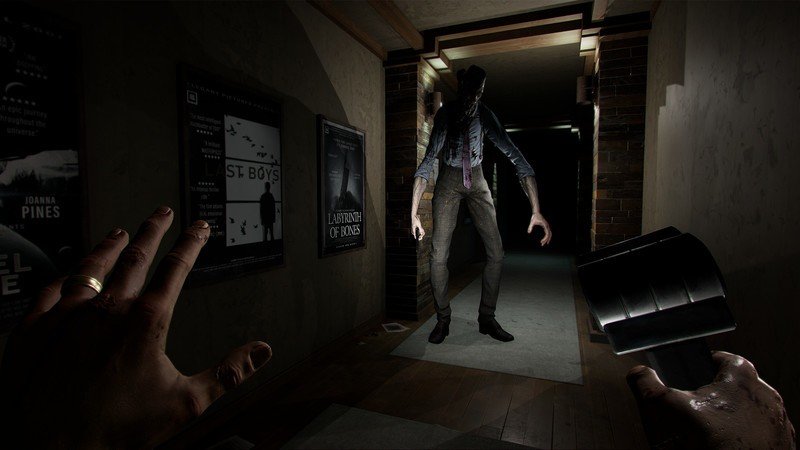
Based on screenshots provided by Fast Travel Games (seen above), the PC version of the game has some pretty significant upgrades in lighting, texture work, and model detail, as well as various post-processing effects that didn't seem present on the Quest 2 version I used. I certainly don't feel like the absence of these affected my enjoyment of the game at all but it's worth noting that, if you have a great gaming PC that can run the Rift version, it's probably the best way to go if you want that extra graphical oomph.
Wraith: The Oblivion - Afterlife: What I didn't like much
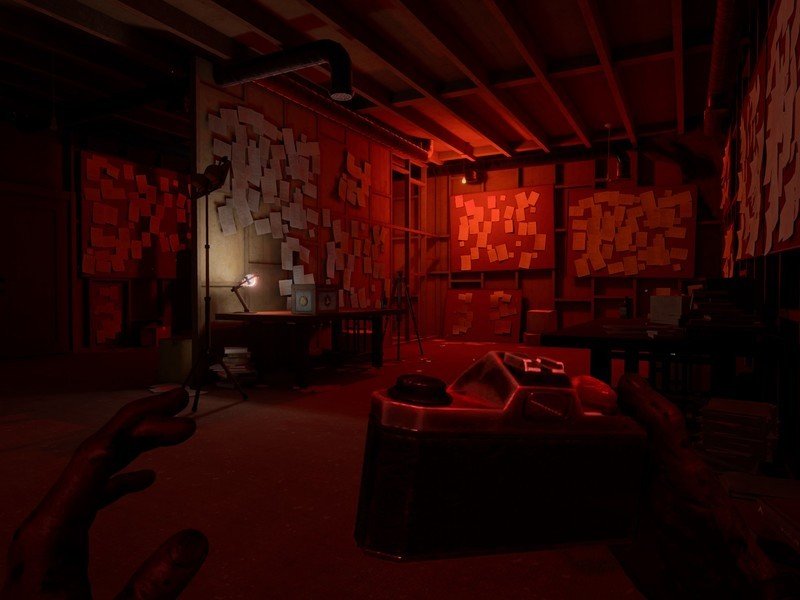
While I found traversal to be a tad on the slow side, it helps keep suspense high as you inspect every corner and room of Barclay Manor. It's almost like those dreams you might have everyone once in a while where you are trying to run but can't ever seem to move faster than a slow jaunt. This certainly helps elevate spectres to an invincible level if they spot you, but I would have loved to have a sprint button just to be able to run and hide, were I quick enough to make the right moves.
Movement is almost like those dreams where you are trying to run but can't ever seem to move faster than a slow jaunt.
Goals are well marked and easy to find, but that wasn't my issue. It's possible that I'm overly dense or was just overthinking the mechanics, but, I got stuck more than once either trying to unlock an area or progress past a particular puzzle. One that's likely my fault revolves around the flashlight you get maybe an hour into the game. This flashlight is used to remove some obstacles, but I didn't realize a single click was a different action than holding the trigger.
A second time was when trying to unlock a safe, where I knew I had the right combination — because I literally had the note with the combination in my hands — but I couldn't unlock it no matter what I did. Turns out I wasn't supposed to let go of the dial when turning, something I would have loved to see or hear a hint about when I failed the puzzle a few times. The Shadow that resides in your head throughout the game makes fun of you other times, so I don't see why he couldn't have done the same here.
There's also no denying that some players will be frustrated by the fact that they have no defense against the spectres that roam the halls and courtyards of Barclay Mansion. Personally, I enjoy these types of gameplay limitations because I feel they make it fit a specific direction. I defended the use of a single save file for Dead Rising back in the day, and I think those types of mechanics are simply part of the curated experience. You might hate it though, and, if so, you may want to skip the game entirely.
Wraith: The Oblivion - Afterlife: Should you play it?
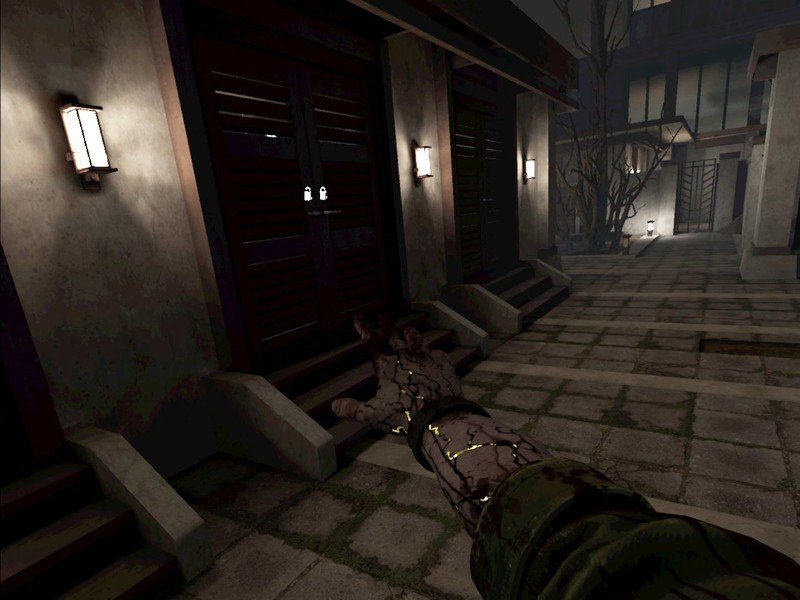
4.5 out of 5
If you love horror games — especially classics like Silent Hill, Amnesia: The Dark Descent, or even Alien: Isolation — you're going to be particularly happy here. Wraith takes you on a journey where you'll learn the deepest, darkest secrets of the individuals you come across. Their horrifying stories are only matched by the form they've taken in the afterlife, and what they'll do to you if they get ahold of you. It's also one of the most visually impressive titles yet on the Quest 2, with detailed environments, superb special effects, and spatial sound that makes you really appreciate a good pair of headphones — that is, of course, until something scares the pants off of you.
Part of the charm of the game is that you have no real defense against spectres, but that limitation might also be frustrating to some players. If you'd rather grab a gun and let loose into an enemy instead of running away from it, this might not be a game for you. If you like open-ended games and feel constricted by tight, curated experiences, Wraith's fairly linear story might also be a turnoff. Otherwise, what you'll find in Wraith: The Oblivion - Afterlife is one of the finest horror games I've ever played, and is a true showcase of what VR, as a medium, can do for horror games when carefully crafted.
Update April 22, 2021: The original version of this article was published on March 3, 2021 and was a hands-on that covered the first 20% of the game. It has been updated to a review of the full and final version of the game.

